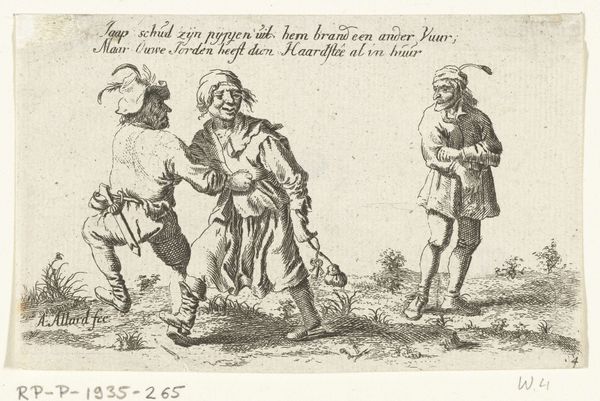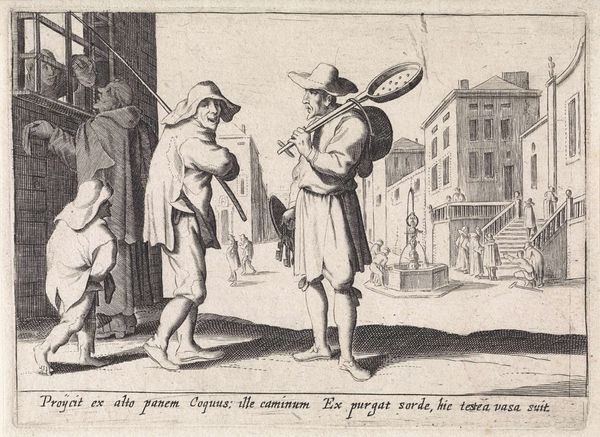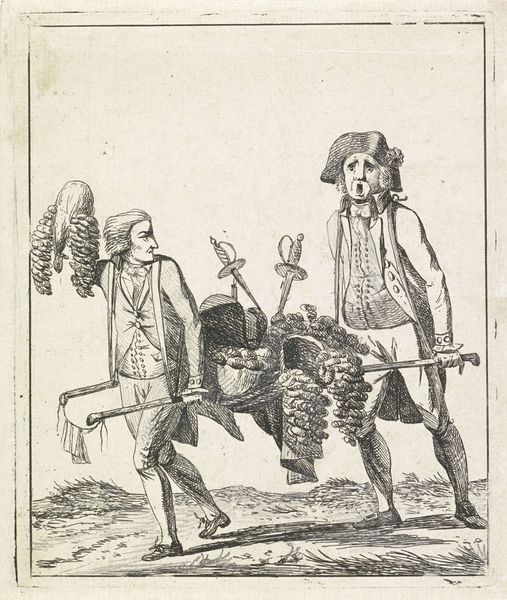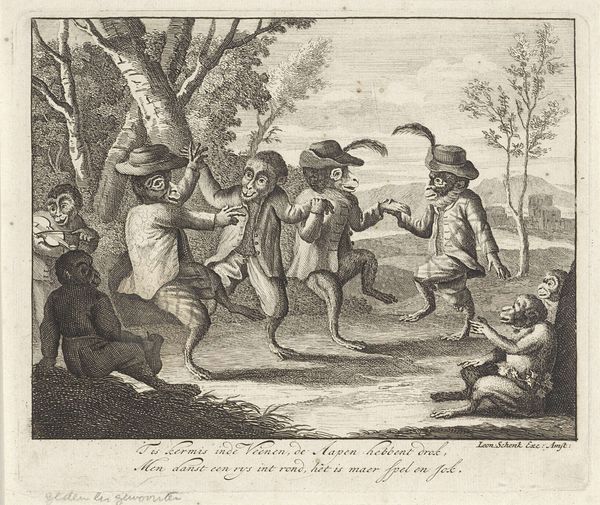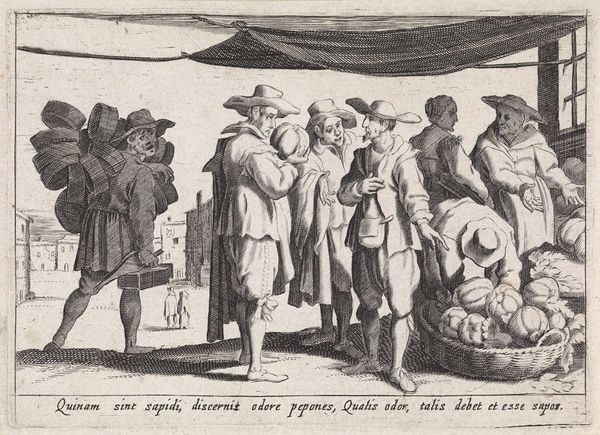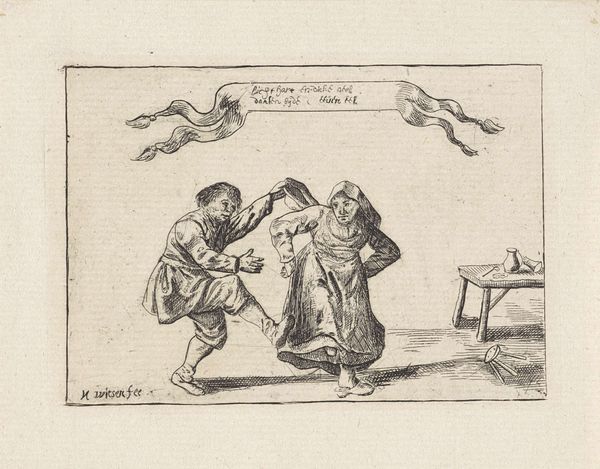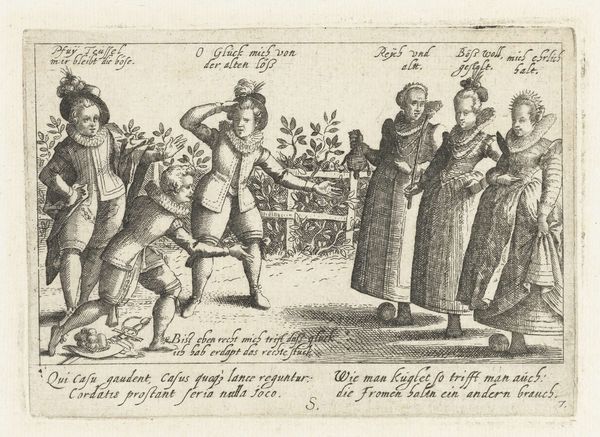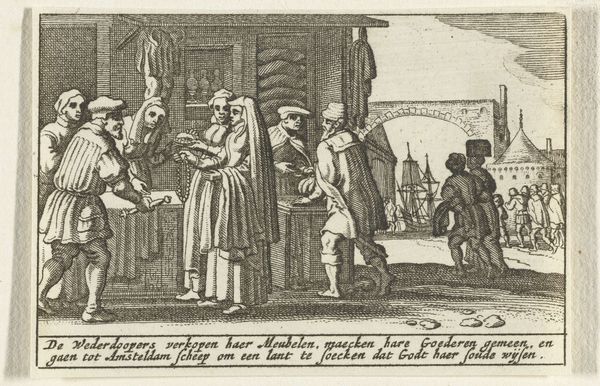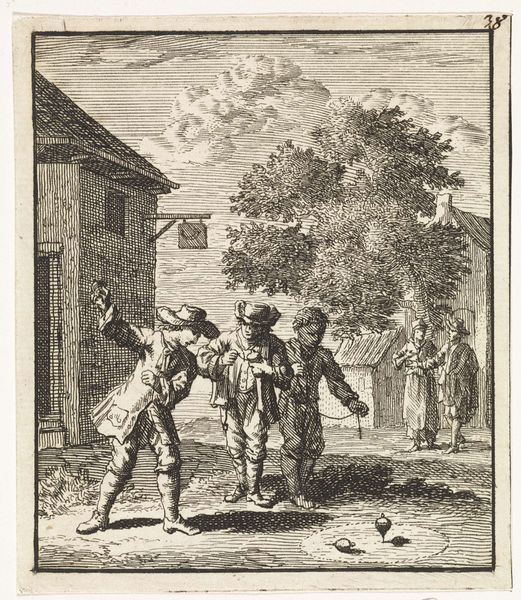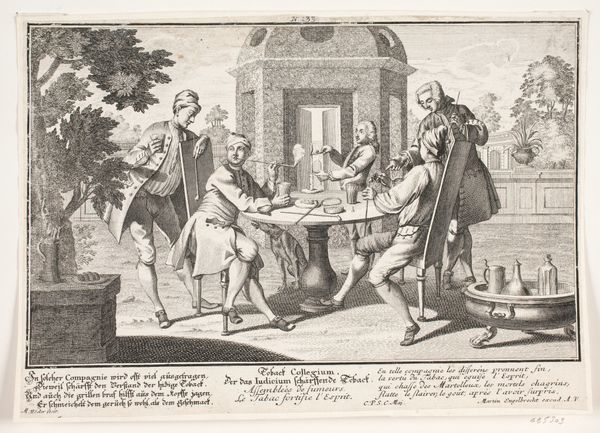
print, etching
#
narrative-art
#
baroque
#
dutch-golden-age
# print
#
etching
#
figuration
#
cityscape
#
genre-painting
Dimensions: height 91 mm, width 125 mm
Copyright: Rijks Museum: Open Domain
Editor: Here we have "Visverkopers," or "Fishmongers," an etching dating from sometime between 1613 and 1667. The artist is anonymous. I'm struck by the activity, the figures vying for attention against the backdrop of a bustling city. How might you interpret the social commentary embedded within this scene? Curator: That's a keen observation. Looking at this print through a historical lens, it speaks volumes about the burgeoning Dutch Golden Age. Genre scenes like these became popular because they reflected the lives of ordinary people and were bought by the rising middle class. Do you notice how the fishmongers are prominently placed and quite expressive? Editor: Yes, they almost seem to be performing. It's quite theatrical, especially given their somewhat exaggerated expressions. Curator: Precisely. The composition reflects a societal shift. This isn’t some grand historical painting, but rather a snapshot of daily life, hinting at a new social order where merchants and tradesmen hold significant cultural value. Note the Latin inscription—do you think that plays a role in how the image was viewed? Editor: That's interesting. It could be a nod to classical learning, a way to legitimize the scene, or maybe a satirical commentary, given the humorous tone. Were these prints meant for a wide audience, or were they mainly circulated among the educated elite? Curator: Initially, prints like these found favor among wealthier patrons. However, their accessibility allowed for broader dissemination over time, influencing popular taste and visually shaping perceptions of Dutch society. Think about how these images would be interpreted in different social strata and even across national borders. Editor: I never thought about it like that. It really highlights how art serves as both a reflection of and a participant in social change. Curator: Indeed. The power of the image lies not just in what it depicts, but in how it actively shapes its viewer's understanding of the world. Editor: It makes you consider who this artwork was intended to impress and how art changes over time, both of which had not occurred to me before!
Comments
No comments
Be the first to comment and join the conversation on the ultimate creative platform.
